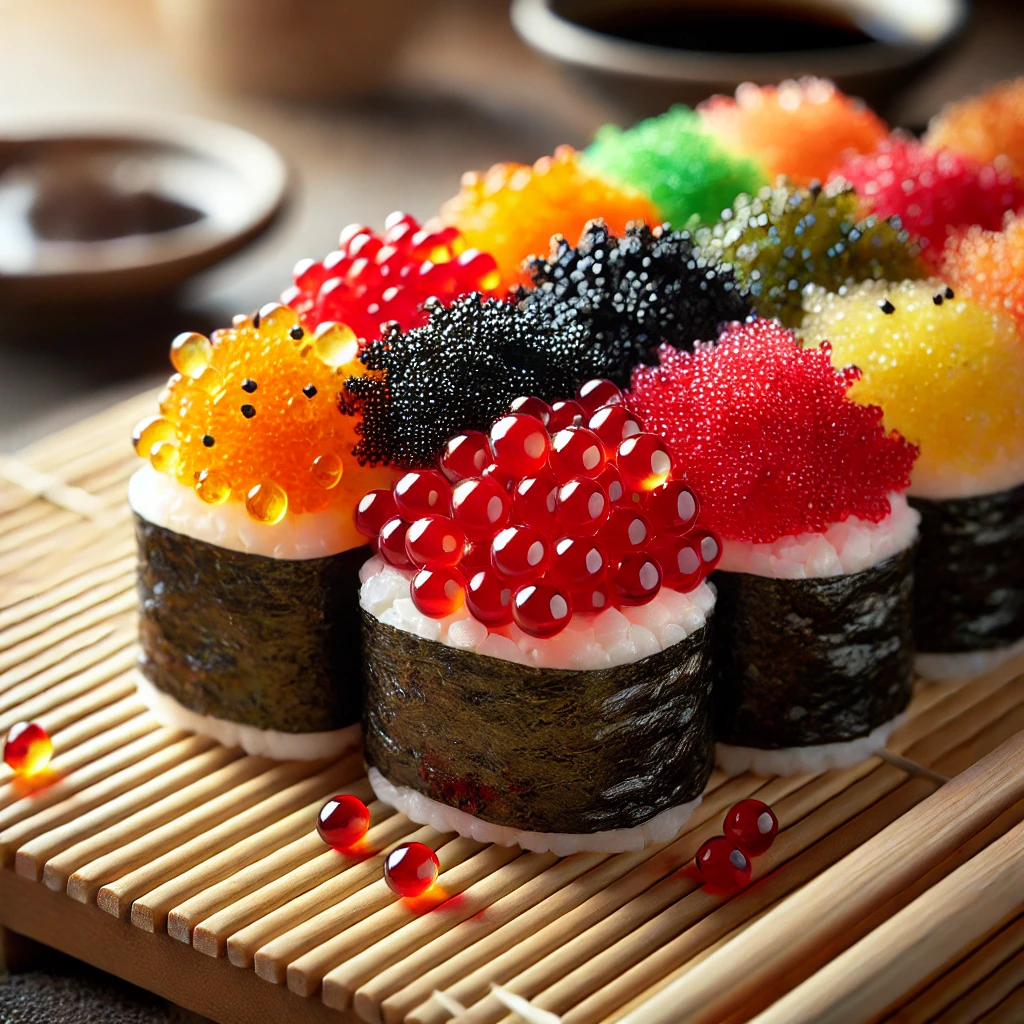




Ordering sushi can be a bit overwhelming for some, especially when navigating through unfamiliar terms and deciding on the perfect fish combination. If you've ever glanced at the menu and wondered, "What exactly is tobiko?" or skipped over it, only to notice the tiny, colorful dots on top of your sushi roll, you're not alone. Read on to discover more about this intriguing sushi ingredient.
Tobiko, resembling miniature caviar, is the roe (eggs) of flying fish. It's smaller than traditional caviar, which is typically made from sturgeon eggs, and ranges in color from bright orange to reddish-orange. Due to its appearance and popularity in Japanese cuisine, tobiko is often called “Japanese caviar.”
Flying fish, found in temperate and tropical oceans, lay unfertilized eggs that are less than 1 mm in size. These eggs are harvested, then cured in salt to preserve their freshness and enhance their flavor.
Tobiko has a unique taste, thanks to its curing process. It’s salty, with a touch of sweetness and sometimes a hint of citrus. Despite its tiny size, tobiko offers a slight crunch when eaten, adding texture to your sushi. It’s not only delicious but also nutritious, rich in omega-3 fatty acids, which are essential for a healthy diet.
While both tob-iko and caviar are fish eggs, the differences between them lie in the species, size, color, and cost. Caviar comes from sturgeon, while tob-iko is harvested from flying fish. Caviar tends to be larger, darker, and more expensive due to the scarcity of sturgeon. Tob-iko, on the other hand, is smaller and brighter in color, with a punchier flavor compared to caviar’s delicate brininess.
Tob-iko comes in various colors, each indicating a different flavor. This versatility comes from the eggs’ ability to absorb color and flavor during the curing process. Here are some common types of tob-iko:
Tob-iko’s small size and salty, crunchy texture make it an ideal topping for sushi, sashimi, and other seafood dishes. It adds visual appeal with its vibrant colors and is often mixed into sauces like spicy mayo or used to garnish salads and appetizers. Tob-iko may even appear as a standalone hors d’oeuvre or a substitute for caviar on blinis or crackers.
Although tob-iko might not be a regular grocery item, it can usually be found in specialty stores. Whole Foods and Japanese or Asian markets often carry tob-iko, making it easy to try this delicacy at home.
Now that you know all about tob-iko, the next time you order sushi, you can enjoy it with a deeper appreciation for this flavorful and versatile ingredient!